The landscapes of the north-west Highlands are glorious all year. In this remote region, you’ll find the highest waterfalls, biggest sea cliffs and the most unusual and spectacular mountains in Britain, along with beautiful lochs (both sea and freshwater), golden-sand beaches and some of the oldest rocks in the world.
From Loch Duich and the familiar sight of Eilean Donan Castle all the way to Cape Wrath at the north-west corner of mainland Scotland, this is a land of wonders.
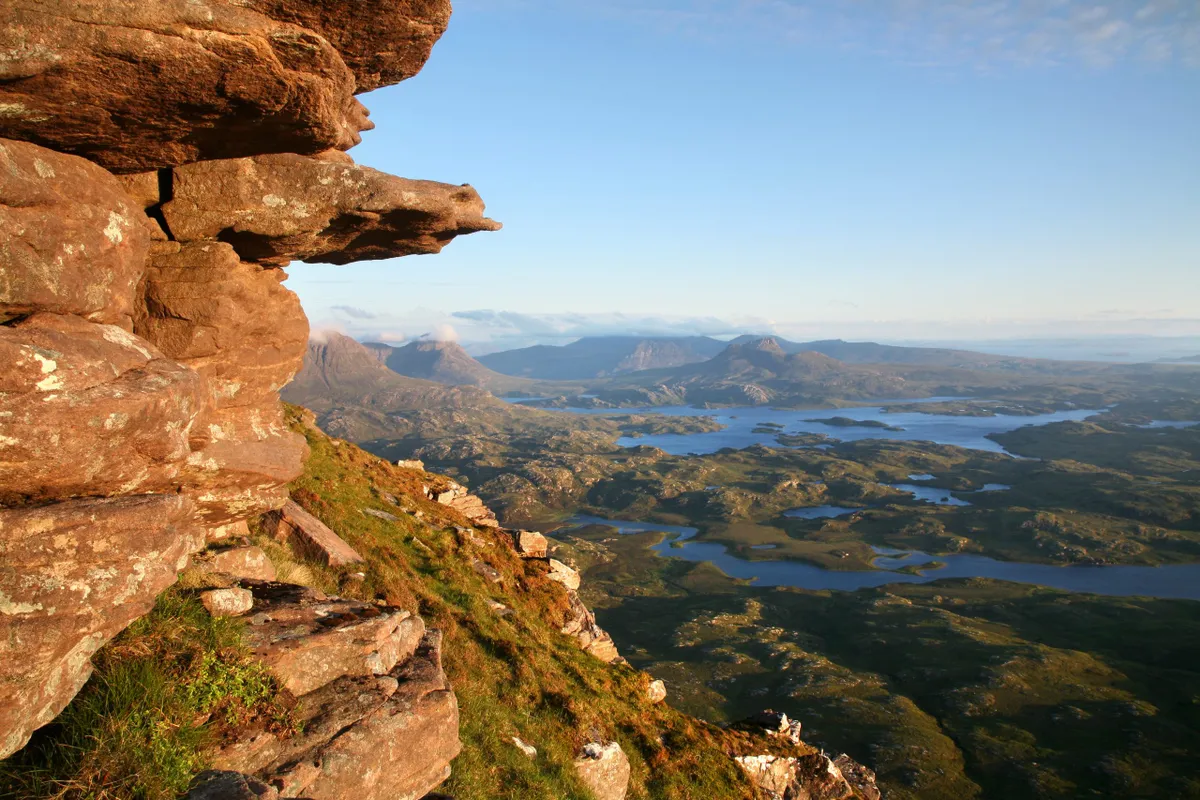
Our guide to the North-West Highlands of Scotland, including where to stay, wildlife highlights, places to visit and the best walking route.
Geology of the North-West Highlands
A geological curiosity in this region is a strip of limestone running across the landscape. This gives rise to the lush green fields around Elphin and results in some big caves – a rarity in the Highlands – in the Inchnadamph area.
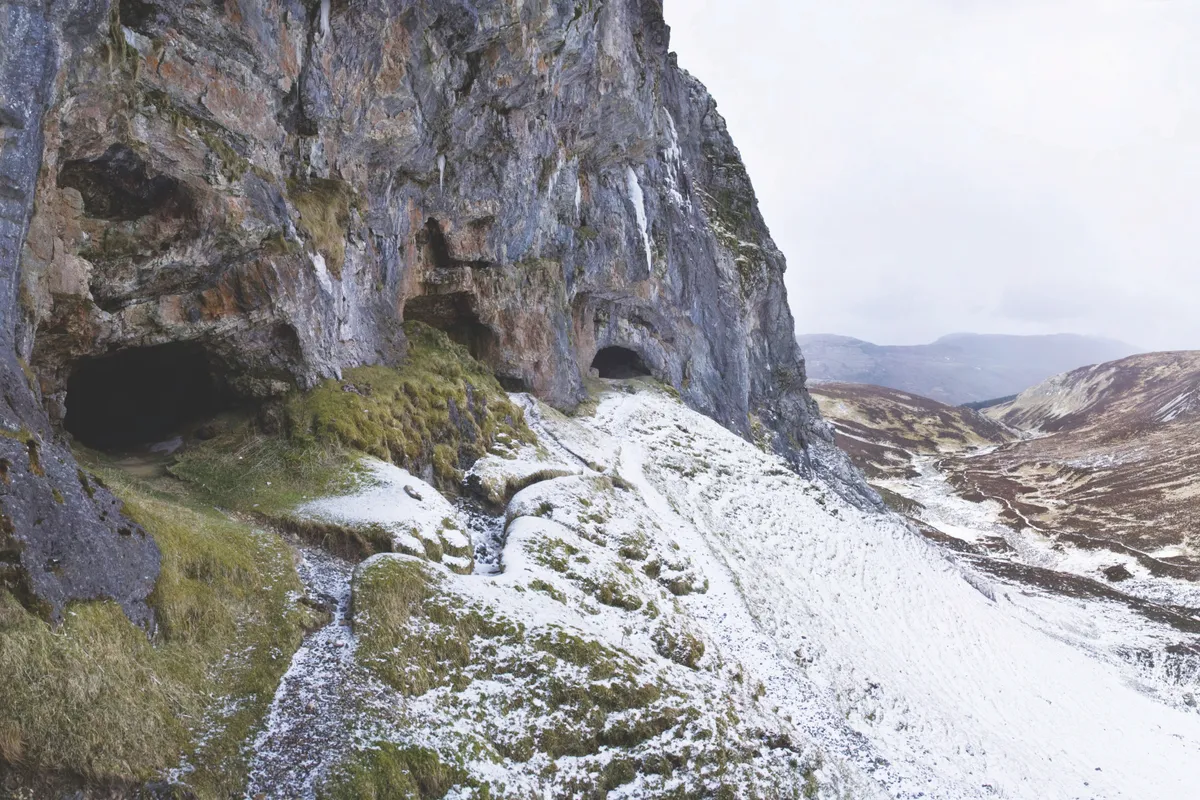
A round trip of 2.75 miles (4.5km) leads to the Bone Caves, so called because, when excavated, the bones of animals that once lived here – including wolves, lynx, Arctic foxes, reindeer and polar bears – were found. When the area is snow-covered, it’s not hard to visualise these large predators roaming here in search of the next meal. Although short, this walk does cross a steep slope and the caves can be slippery inside, so explore with care.
Wildlife to see
There is a wealth of wildlife in the north-west Highlands. Red deer, the largest mammal in the Highlands, come down from snow-covered hills in search of food and may be seen in glens and even close to roads, often congregating in large herds.
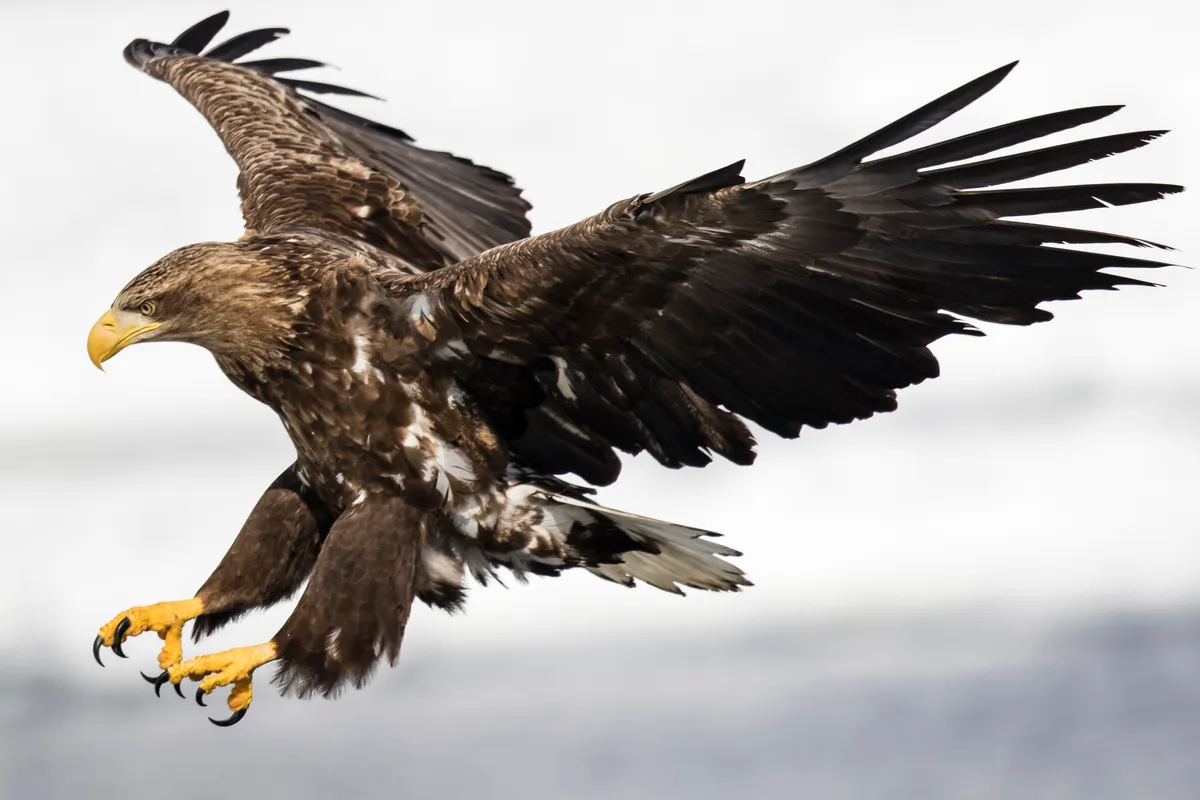
Look out for otters in sea lochs. About the size of a small dog, these graceful, playful animals are active by day and can be seen swimming or foraging along the tide line.
If you’re lucky you may spot a white-tailed eagle flying slowly over the landscape. These magnificent eagles are the largest bird of prey in the UK.
Places to visit
Beinn Eighe National Nature Reserve
To the north-east is little Kinlochewe at the head of beautiful freshwater Loch Maree, which stretches 12.5 miles (20km) almost to the sea. Just along the loch from Kinlochewe are the ancient pinewoods of Beinn Eighe National Nature Reserve, the first such reserve in Britain. Under snow, the forest is magical, shimmering and glistening – a white wonderland.
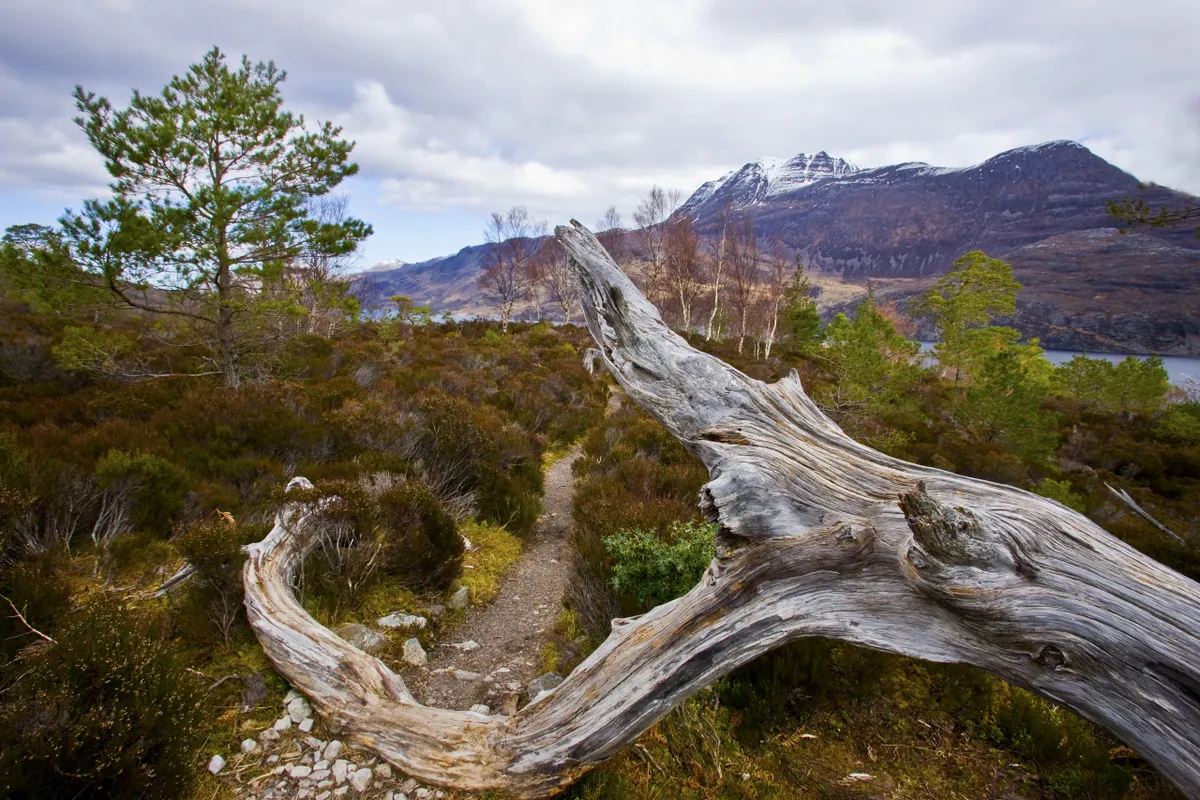
A path, the Mountain Trail, winds up through the trees to the big Conservation Cairn. It’s a wonderful walk but steep in places, so great care is needed when it’s icy. It ends well above the trees, too, where you’ll be exposed to the full blast of the winter weather. The views across the dark waters of Loch Maree far below to the rugged wedge of Slioch mountain are tremendous. visitscotland.com/beinn-eighe-national-nature-reserve
Coigach and Assynt
North of Ullapool are the mountains in the districts of Coigach and Assynt, the strangest and most distinctive peaks in Britain. Rising steeply out of a low undulating land of little lochs and knolls – known as a cnoc and lochan landscape – each mountain is separate and unique. When snow-covered, they look like great white monsters rearing into the sky – primeval beasts from another time. From Ben More Coigach over Stac Pollaidh and Suilven to Quinag and Foinaven, they are all marvellous, and steep – not for the inexperienced climber.
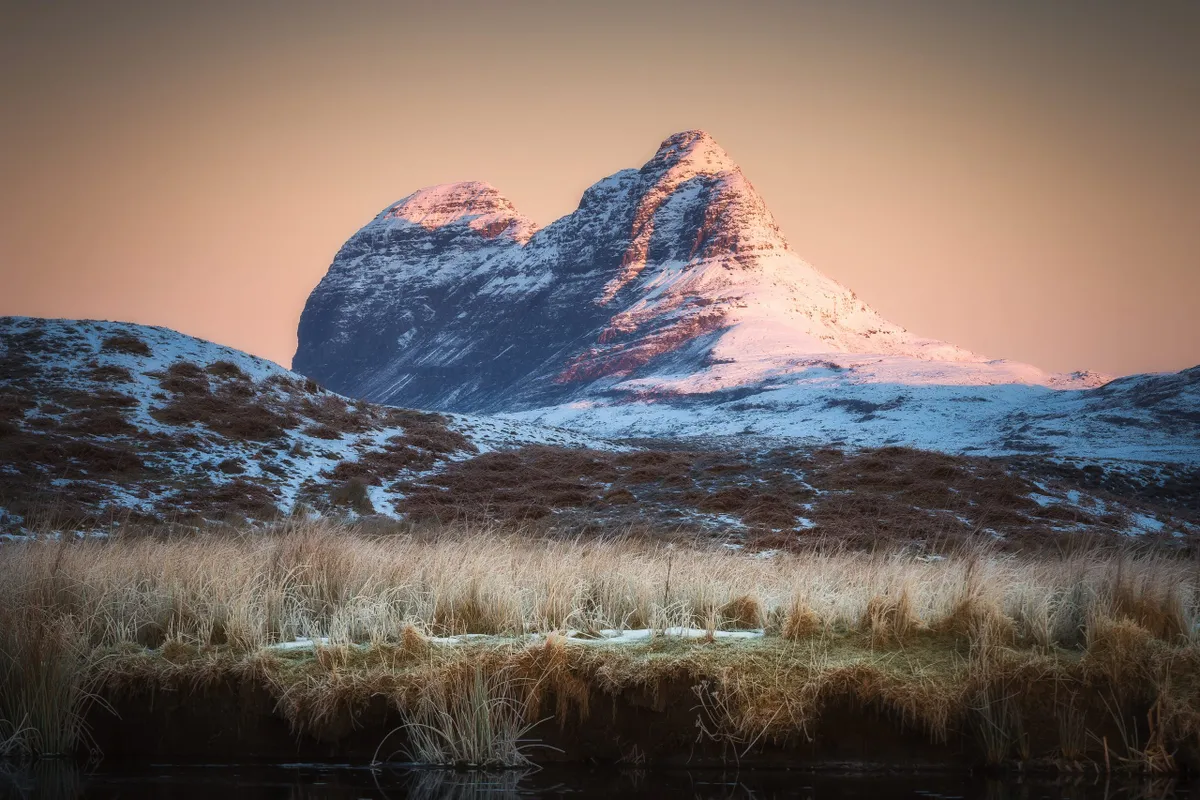
This is a geologically fascinating region, important in the discoveries of how the world was formed, and home to some of the oldest rocks in the world. In winter, with snow covering the ground, it’s easy to see how the melting of the glaciers at the end of the last Ice Age shaped this landscape, carving hollows that became lochs, ripping off the sides of the mountains, and dumping boulders – glacial erratics – and vast areas of sand and gravel. The whole area, from Ben More Coigach to Cape Wrath, makes up the North West Highlands Geopark.
There is a superb cross-country walk through the region, from the little hamlet of Elphin to the fishing port of Lochinver, where you can restore your strength with a marvellous pie from Lochinver Larder. This 12-mile (20km) walk passes below the peaks of Canisp and fantastic-looking Suilven, perhaps the most impressive peak in the region. While not a mountaineering route, it does cross rough remote country and should not be taken lightly in winter. ullapool.com
Falls of Kirkaig
Just along the coast from Lochinver is Inverkirkaig where you’ll find the wonderful Achins Book and Coffee Shop, perhaps the most remote bookshop on mainland Britain. From here, there’s a lovely walk up a wooded glen to the Falls of Kirkaig, where the river plunges 18 metres down a cleft in sheer cliffs between wooded buttresses into a deep pool. The path down to the falls is steep and rocky; avoid it if icy.

Cam Loch
Another lower-level walk that doesn’t require mountaineering skills is the eight-mile (13km) circuit of Cam Loch just south of Elphin. ‘Cam’ means crooked, or distorted, and the loch has a shoreline that twists and turns round many bays and promontories, making for an interesting walk, especially as there are splendid views of the mountains rising all around.
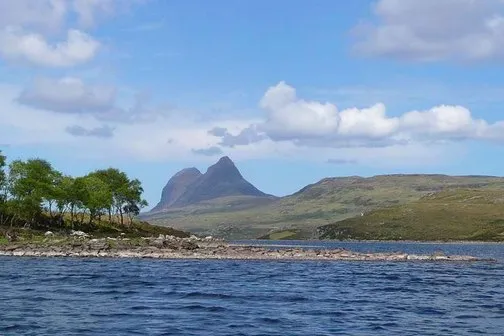
Knockan Crag National Nature Reserve
To learn more about the fascinating geology of the area, visit Knockan Crag, a national nature reserve 12.5 miles (21km) north of Ullapool, where there’s a visitor centre and several trails with interpretive signs, poetry and sculpture. The Crag Top Trail is the longest; it takes about an hour and offers superb views of the surrounding landscape. A line of snow-capped hills rises out of a watery land replete with lochans as far as the eye can see. nature.scot/knockan-crag-national-nature-reserve
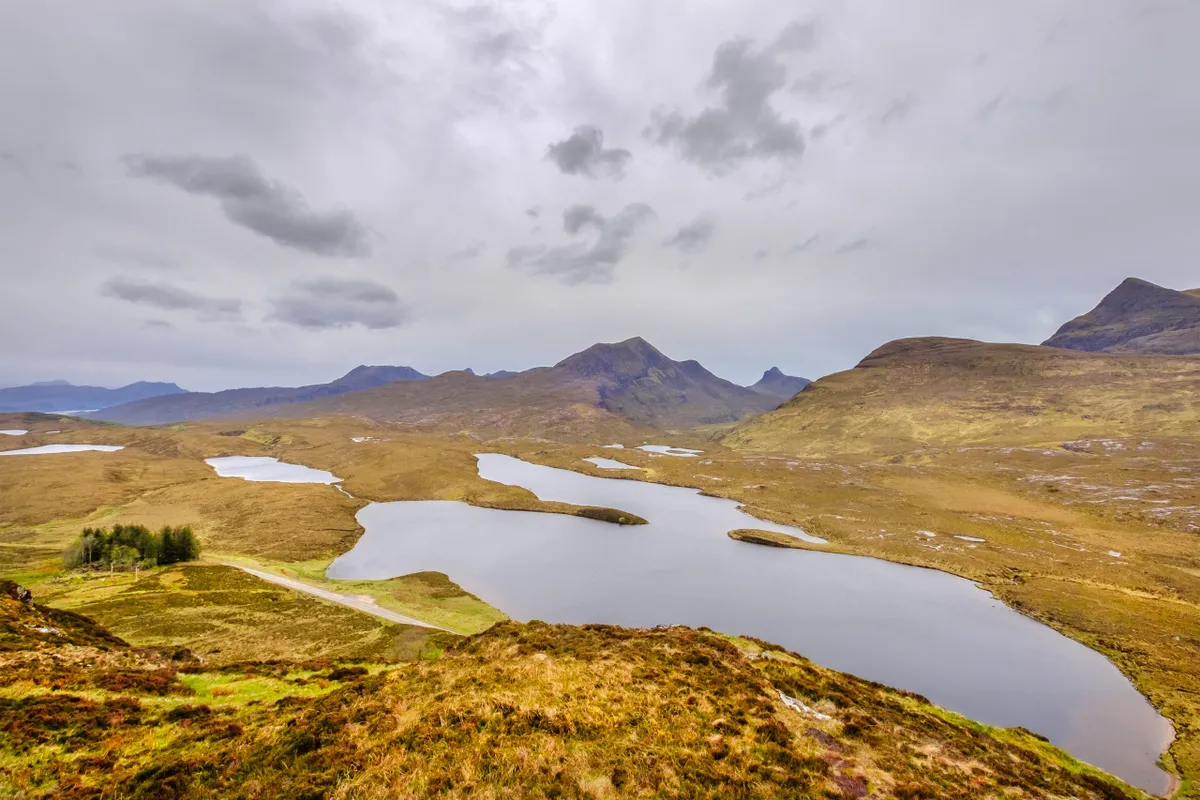
Eas a’ Chual Aluinn – Britain's highest waterfalls
Further north past the Inchnadamph Hotel (closed in winter) is Loch na Gainmhich; from here you can walk across rough ground for four miles (6.5km) to the top of the highest waterfall in Britain, Eas a’ Chual Aluinn – the Splendid Falls of Coul – that crash 200 metres into the glen below.
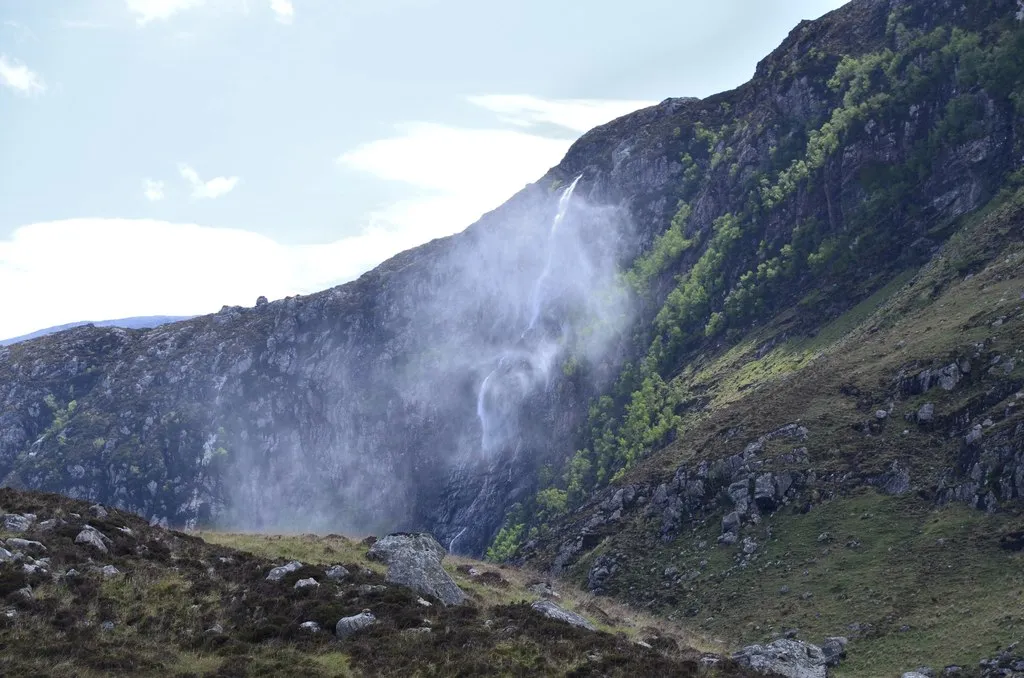
Only rarely does this impressive and powerful waterfall freeze but it’s still worth a visit in winter as the snow-covered surroundings enhance its dramatic setting. Ice climbers have ascended the waterfall on occasions when it has frozen, which must have been an amazing spectacle. The area at the top of the falls can be slippery in places so go carefully.
Sandwood Bay
Not far from the latter is the start of the four-mile (6.5km) walk to lovely Sandwood Bay – a curving sweep of pink-hued sand backed by big dunes and flanked by towering cliffs, owned and protected by the John Muir Trust. This is arguably the finest beach in Britain.
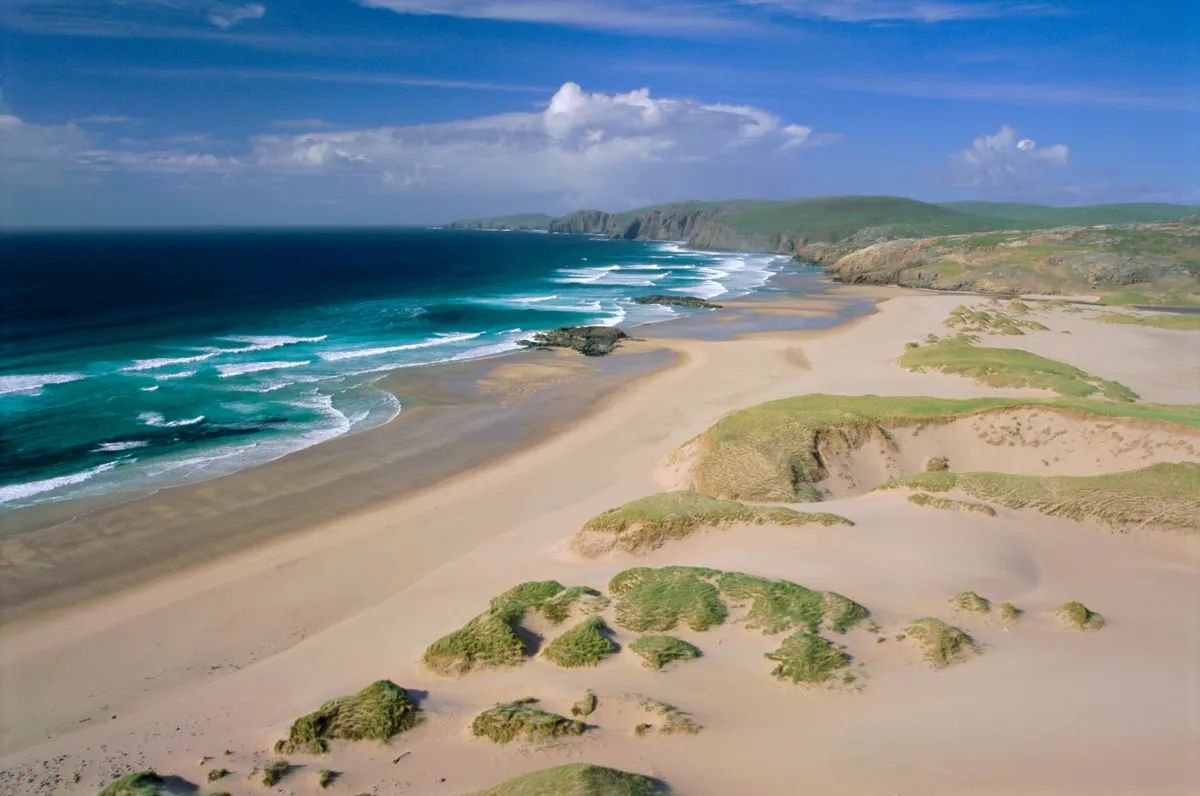
Cape Wrath
The whole coast north to Cape Wrath is remarkable, with huge cliffs, tottering sea stacks, wave-lashed skerries, hidden coves and pebble beaches. The screaming of seabirds is a constant accompaniment. In winter, watching the grey sea crashing on the rocks, it’s easy to imagine the Viking longboats coming around Cape Wrath. The name Wrath comes from the Norse hvarf, meaning headland; Cape Wrath was a major navigational feature for the Vikings.
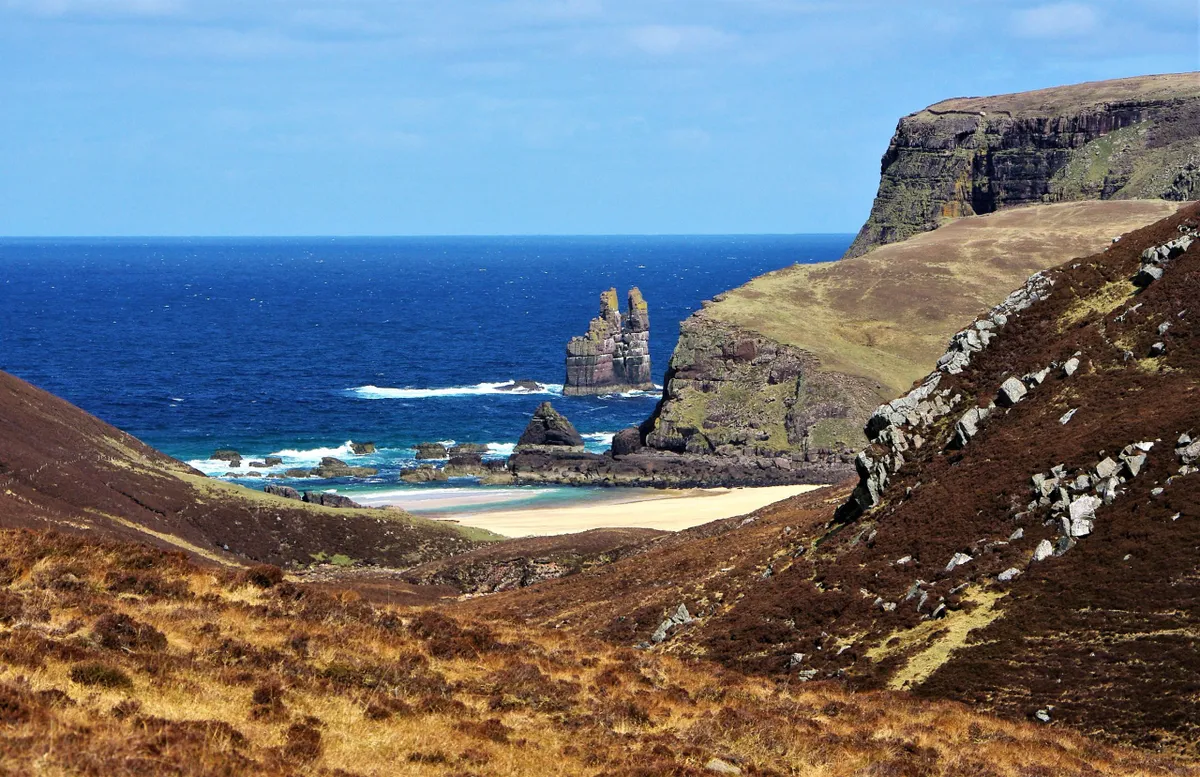
The route from Sandwood Bay to Cape Wrath is a 12-mile (19km) walk. Awaiting you is Cape Wrath Lighthouse’s Ozone Café, which – remarkably – is open 24 hours aday, 365 days a year. You can stay at the lighthouse, where a bunkhouse sleeps eight. If you don’t fancy the walk, café owner John Ure says he will happily drop or collect customers from the nearby village of Durness, until the regular minibus service resumes at Easter (and continues until mid-October).
If you have other plans for the night, even a simple walk part-way to Cape Wrath from Sandwood Bay is very worthwhile. The lighthouse, built in 1828 by Robert Stevenson, grandfather of author Robert Louis Stevenson (of Treasure Island and Kidnapped fame), is visible from far down the coast, and makes a spectacular ending to your journey through this wildly beautiful, rugged landscape. capewrath.org.uk
Villages and towns
Ullapool
Further north, past sharp-fanged An Teallach (its alpine conditions in winter also require mountaineering skills to ascend), is Little Loch Broom, then Loch Broom itself and the town of Ullapool, the biggest settlement in the north-west Highlands and a lovely fishing port with all the facilities you’d need. ullapool.com
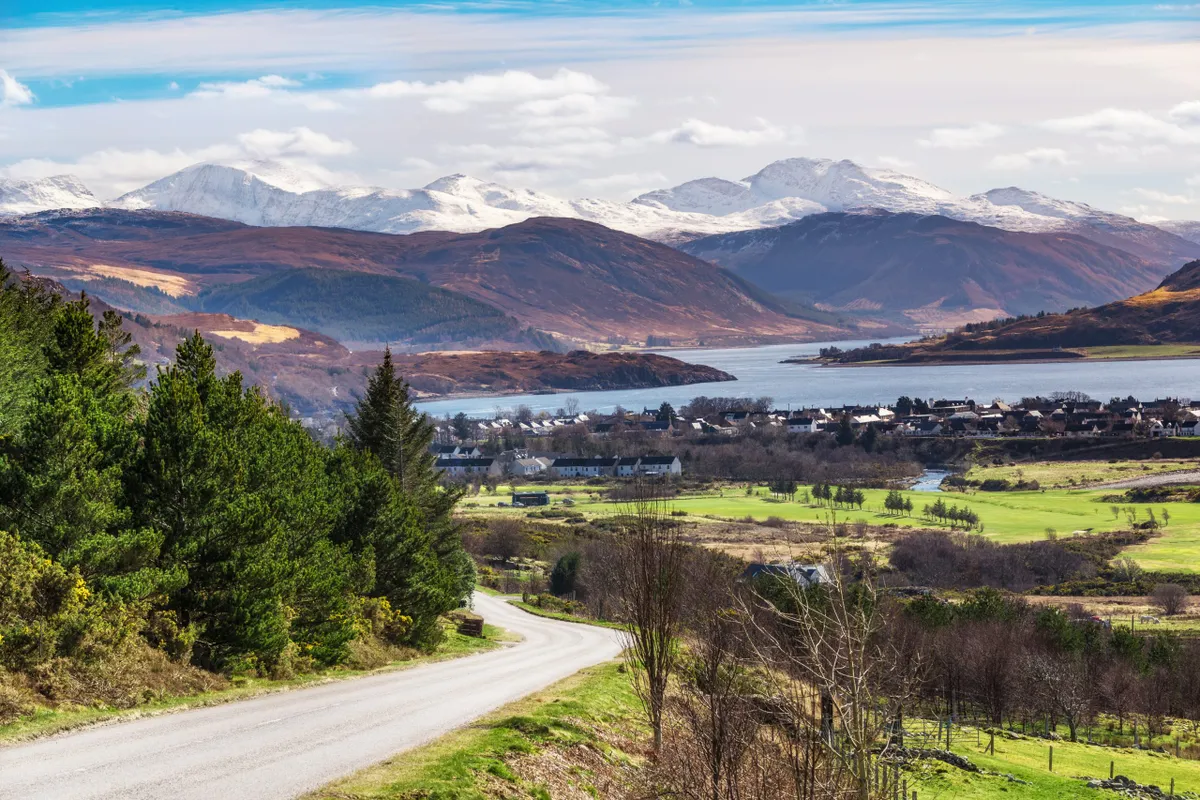
Gairloch and Poolewe
To the north-west of Loch Maree are the lovely coastal villages of Gairloch and Poolewe, both good bases for combining coastal and hill walks, and excellent for warming food and coastal strolls when the mountains are wrapped in blizzards.
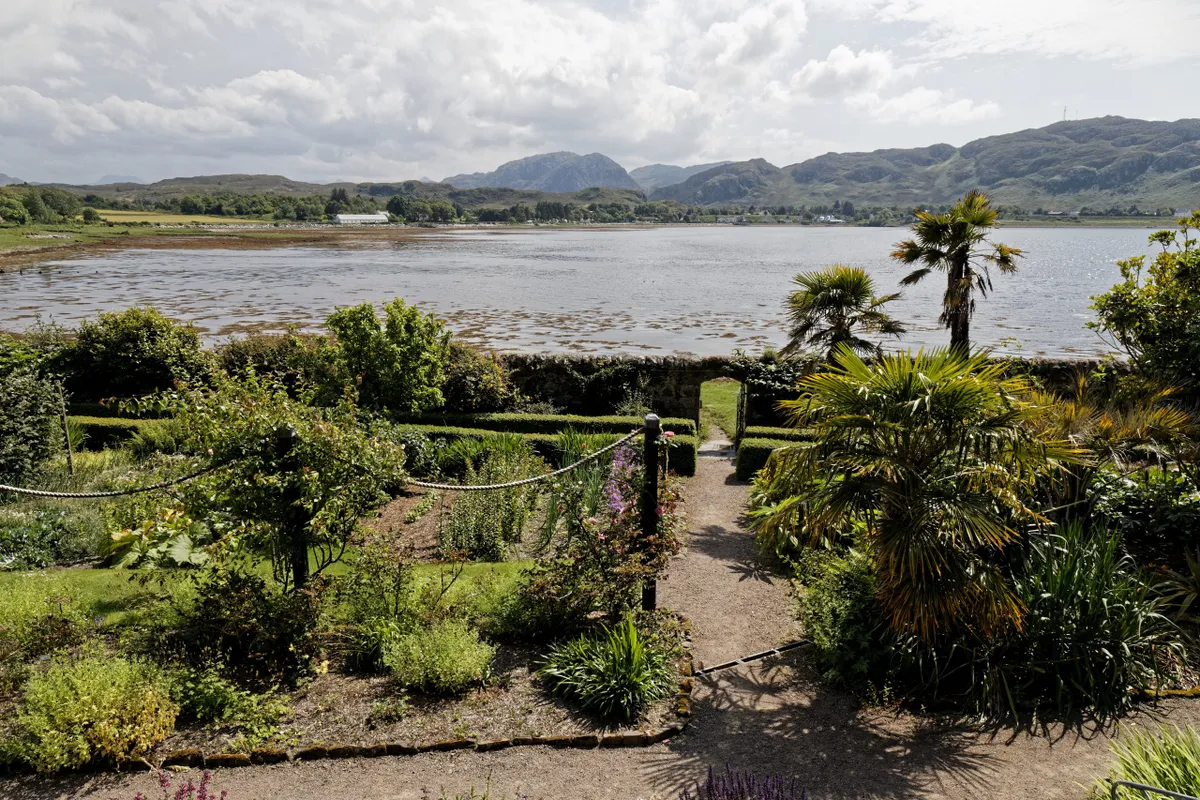
Kylesku, Rhiconich and Kinlochbervie
There are few settlements north of Ullapool. Kylesku is the main village, situated at the junction of the sea lochs Glencoul and Gleann Dubh. A dramatic 276-metre bridge crosses the narrows between the two lochs. Further north on the coast are the hamlets of Rhiconich and Kinlochbervie.
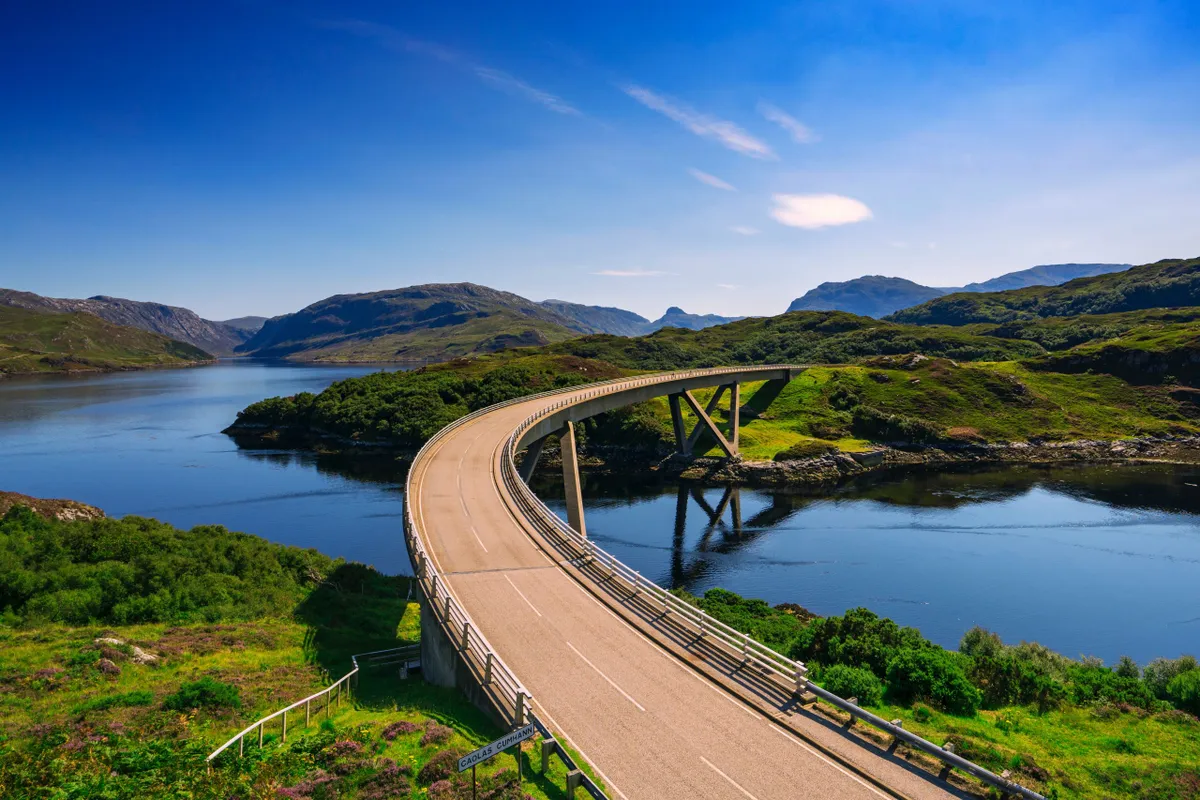
Places to stay
Gerry’s Hostel, Strathcarron
A long-established hillwalking hostel surrounded by mountains. There’s a dormitory as well as family rooms, and a wood fire keeps the common room warm after a cold day out. From £20 per person per night. 01520 766232, gerryshostel.com
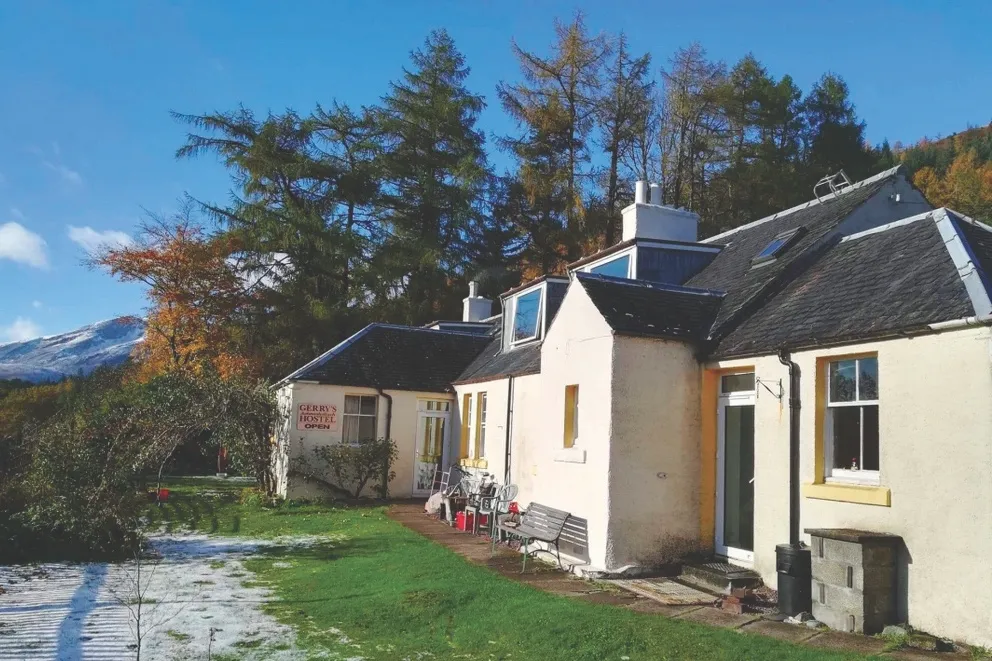
Cape Wrath Bunkhouse
Cape Wrath Bunkhouse sleeps eight, beds are £5 a night; 01971 511314, visitscotland.com
Ferry Boat Inn, Ullapool
This small, comfortable and traditional hotel sits on the shores of Loch Broom. As well as wonderful views, it has a seafood restaurant and bar, and is just a few minutes’ walk from the centre of town. Double rooms from £65. 01854 612431, fbiullapool.com
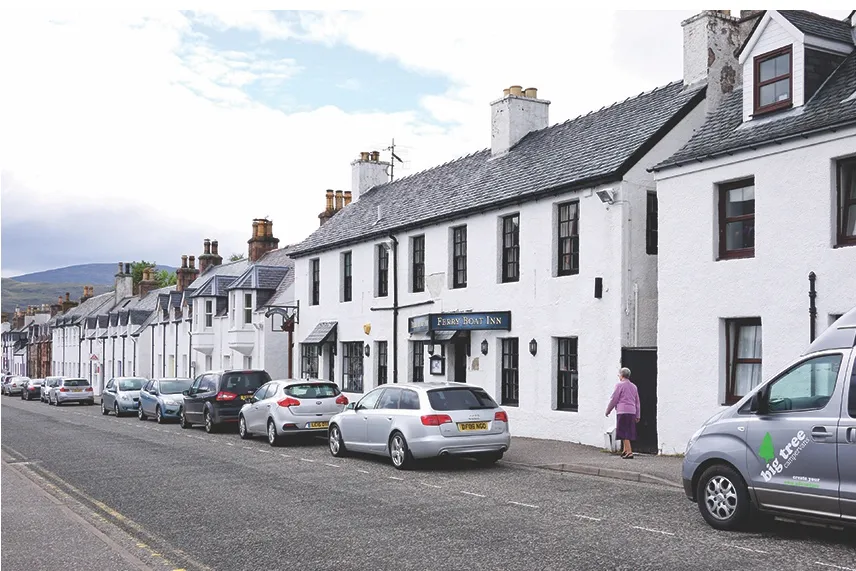
The Torridon
Located on the shores of Loch Torridon, this sumptuous hotel has wonderful views across the loch to the mountains. The building, dating back to the 1860s, is magnificent and the personal service exemplary. Don’t miss its award-winning whisky bar with over 365 malts. Double rooms from £165. 01445 791242, thetorridon.com
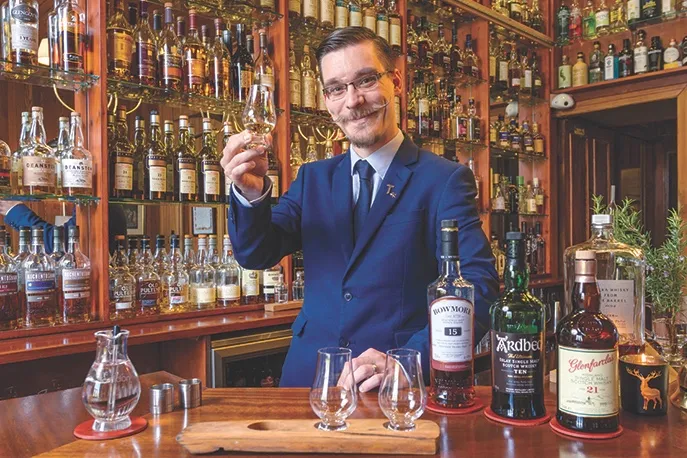
Where to eat
After a bracing day in the cold, a bowl of hearty soup is a great way to warm up. Scotch broth and lentil soup are traditional Highland favourites. If you’re still not full, a rich clootie dumpling packed with oatmeal and dried fruit will take care of that.
Lochinver Larder, Lochinver
A marvellous place with absolutely amazing pies. 01571 844356, piesbypost.co.uk/lochlarder
The Ceilidh Place, Ullapool
An excellent spot in Ullapool for an evening meal. There’s often live music, and a great bookshop and art gallery to browse in as well. 01854 612103, theceilidhplace.com
The Mountain Coffee Company, Gairloch
An interesting, quirky café, with an independent bookstore stocking local maps and guides. Superb coffee and giant homemade scones make for a great breakfast. 01445 712316
The Elphin Tearooms, Elphin
Tearooms with homemade soups, cakes and scones, and stunning views of Suilven; it’s dog-friendly, too. elphintearooms.co.uk
Visiting in winter?
Winter journeys require careful preparation. If you venture far from the roads, particularly if going up the hills, experience of winter walking is necessary. Alternatively, go with a local guide. Keep an eye on the weather forecast, too. Winter storms are fierce and exhilarating – but you don’t want to be caught in one in the hills.
The village of Lochinver, on the shore beneath the west face of Quinag (808 metres), Scotland ©Alamy
To escape the winter weather and the long hours of darkness, there are warm, friendly bars and cafés and many comfortable places to stay. But be sure to call ahead and check they’re open, because some places close in winter or have restricted opening hours. Sitting before a blazing log fire with a dram and listening to local musicians play is a wonderful way to end a winter’s day.
Walking advice
These websites offer information about walking routes low and high, local geology and facilities.
• Find hundreds of walking routes across the Highlands; walkhighlands.co.uk
• Discover maps and tools to help you make the most of your geopark visit; nwhgeopark.com
• For a wealth of information on all aspects of visiting Scotland; visitscotland.com
Safety
Find good advice on the skills and equipment you need in the winter hills on Mountaineering Scotland (mountaineering.scot/safety-and-skills) and Walk Highlands (walkhighlands.co.uk/safety/winter-skills.shtml).
Guided walks
A safe way to venture out is with a local guide.
• Hamlet Mountaineering A full guided day is £160, plus £20 per additional person. 01854 622754, hamletmountaineering.com
• Kintail Mountain Activities £130 a day for one person, £150 for two. Four or more is £50 per person a day. kintailmountainactivities.co.uk